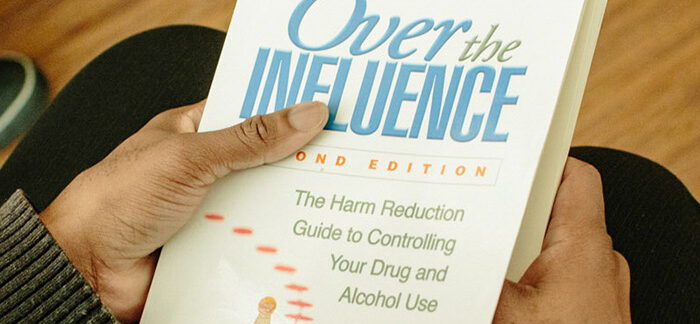Syringe access programs increase safe syringe disposal
There are clear public health benefits to ensuring that people who inject drugs have ready access to sterile supplies. Although safer disposal is an integral part of all syringe access programs, communities often raise concern that a large volume of syringes distributed increases the number of needles that end up on city streets and in other public places.
Three research studies show that needle exchange and syringe access programs are not associated with unsafe syringe disposal. There’s an important distinction between cities that do and cities that don’t support syringe access programs. Cities with syringe access programs also provide disposal education and access points. People who live in cities without syringe access programs have few alternatives for disposal other than in public areas or in the trash.
Syringe access programs mean safer disposal
A study conducted by Lynn Wenger, MSW, MPH and colleagues in 2008 surveyed people who inject drugs in San Francisco about syringe disposal, and looked for discarded syringes in selected neighborhoods around the city.
A total of 602 people who inject drugs were included in the quantitative study that asked about disposal practices. 80% of syringes used in the previous 30 days were reported as disposed of at a needle access program. Thirteen percent (8,425 out of 66,409) were reported as improperly disposed of (e.g., placed in the trash, flushed down the toilet). The remaining 7% of syringes were disposed of at hospitals/clinics, pharmacies, or other places with disposal boxes.
Importantly, people who accessed syringes from unauthorized sources—in other words, sources other than needle exchanges or access programs—were more likely to dispose of syringes improperly. When community members have proper access to syringes, they dispose of them properly.
Improper disposal: A comparison of two cities
In 2008 and 2009, a team of researchers compared syringe disposal between two cities: San Francisco (which supports syringe access programs), and Miami (which at the time did not support syringe access programs).
The researchers did a visual walk-through of 2,114 city blocks (in San Francisco) and 1,769 city blocks (in Miami) to look for discarded syringes. They also surveyed people who inject drugs (602 in San Francisco and 448 in Miami) to ask about disposal practices.
To facilitate comparison of discarded syringes between the two cities, the researchers multiplied the number of syringes found in San Francisco by four, since San Francisco has about ¼ the number of people who inject drugs as Miami. The researchers defined syringe prevalence as the number of syringes per 1,000 population living in the inspected census blocks.
The researchers found 11 discarded syringes in San Francisco (adjusted to 44 syringes for comparison purposes). By comparison, they found 328 in Miami. The syringe prevalence was 0.3/1000 in San Francisco and 4.9/1000 in Miami.
In San Francisco, 11% of survey participants reported disposing of syringes in the previous 30 days in public places (69% of participants in Miami reported this). In Miami, the vast majority (95%) of syringes disposed of in the previous 30 days were disposed of improperly, compared to 13% in San Francisco.
People who inject drugs in Miami had over 34 times the odds of public syringe disposal relative to people who inject drugs in San Francisco, the researchers found.
Without access to syringe access program disposal options, people who inject drugs in Miami reported that they most commonly disposed of syringes:
- In public places (4,689 syringes)
- In the trash (4,004 syringes)
- By giving them away (675 syringes)
People in Miami also reported disposing of smaller numbers of syringes:
- In sharps containers (334 syringes)
- At hospitals or clinics (200 syringes)
“These results suggest that NSPs [needle and syringe programs] are a significant means of collecting used syringes and do not increase the amount of publicly discarded used syringes,” the authors said.
San Francisco AIDS Foundation properly discarded 11 tons of syringe equipment and medical waste in 2017 alone.
Higher syringe “coverage” associated with safe disposal
A study of 1,577 syringe exchange programs in California, conducted from 2001 to 2003 found that people who had the highest “coverage” of sterile syringes for every injection were the most likely to dispose of syringes safely.
At the time, the syringe access sites included in the study operated on different models: some operated on a strict one-for-one exchange, some supplemented the one-for-one exchange with a few extra syringes (called “one-for-one plus”) and some provided as many syringes at one time as the participant stated that they needed. The researchers wanted to find out if the syringe access model affected how many syringes were improperly disposed.
The researchers interviewed participants from 24 syringe exchange programs in California, and asked about syringe re-use, injection risk, syringe coverage, and disposal. Syringe coverage was reported as a percentage based on how many syringes the participant had accessed in a month versus the number of injections. For example, people with 50% coverage had only half the syringes they needed; people with 100% coverage had the exact number of syringes needed; people with 150% coverage had 1.5 times the number of sterile syringes they needed for their use.
Syringe coverage among participants varied widely—with 35% of the sample having coverage of 150% or more; 12% having 100% to 149% coverage; 19% having coverage between 50% and 99%; and 34% having coverage less than 50%.
Safe syringe disposal was higher among participants with the greatest syringe coverage, and the odds of unsafe syringe disposal did not increase among people with greater syringe coverage. Importantly, people with 150% or more syringe coverage were significantly less likely to share syringes than those with coverage between 100% and 149%. User-driven syringe access (as opposed to one-for-one needle exchanges) provided higher syringe coverage and helped keep people safe while at the same time did not lead to increased improper disposal.
“The finding that higher syringe coverage was not associated with unsafe syringe disposal underscores one of the values of SEP [syringe exchange program] schemes—the safe removal of harmful waste materials from communities,” the authors said.
San Francisco Streets
The San Francisco AIDS Foundation 6th Street Harm Reduction Center, which sits in the middle of the SoMa/Tenderloin neighborhood of San Francisco, brings in a steady stream of people who pick up safer injection supplies including sterile syringes, alcohol pads, water and more. The center offers additional health services and wellness checks, too. The demand is enormous—it’s estimated that there are 22,500 people in San Francisco who inject drugs—and the staff oversee the distribution and proper disposal of large quantities of sterile syringes every year to combat the spread of HIV and hepatitis C to anyone who needs them. Notably, teams of staff and community volunteers provide 20 hours of community clean-up each week in the neighborhood.
Sources
Blumenthal, R.N. and colleagues. Higher syringe coverage is associated with lower odds of HIV risk and does not increase unsafe syringe disposal among syringe exchange program clients. Drug Alcohol Depend. 2007.
Tookes, H.E. and colleagues. A comparison of syringe disposal practices among injection drug users in a city with versus a city without needle and syringe programs. Drug Alcohol Depend. 2012.
Wenger, L.D. and colleagues. Syringe disposal among injection drug users in San Francisco. Am J Public Health. 2011.










